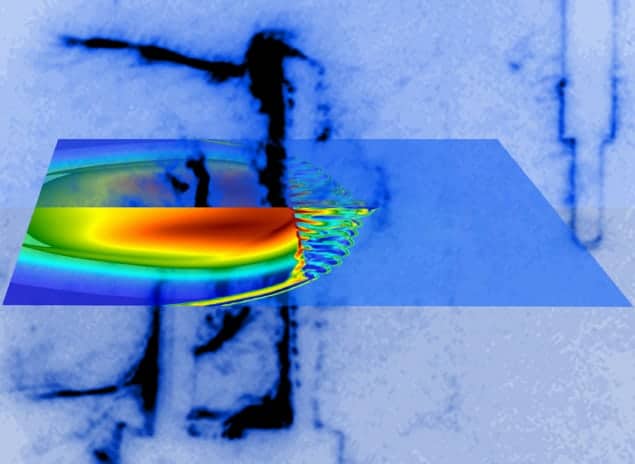
One of the world’s most powerful laser facilities has been used to create tiny versions of supernova explosions in the laboratory. The goal of the research, which has been done by an international team of physicists, is to gain insight into one of the most energetic and unpredictable events in the universe. The researchers also hope that their experiments could lead to a better understanding of the role played by cosmic turbulence in creating the powerful magnetic fields seen in some atypical supernova remnants, such as Cassiopeia A.
Supernovae are massive stellar explosions that are triggered either when the fuel within a star reignites or its core collapses under extreme gravitational forces. The explosion expels most of the star’s material, which in turn sends out a shock wave that expands over long distances in interstellar space. The shock wave binds most of the ejected stellar material and other dust in its path, creating what is known as a supernova remnant (SNR). While most SNRs have regular, shell-like features, some, such as Cassiopeia A, have irregular and unexplained shapes. The Cassiopeia SNR is about 11,000 light-years from Earth and light from it first reached our planet 300 years ago. Optical images of the explosion reveal irregular “knotty” features, while X-ray and radio observations show the presence of magnetic fields about 100 times stronger than those in the surrounding interstellar medium.
Knotted shock
It is these oddities of Cassiopeia A that caught the attention of plasma physicist Gianluca Gregori of Oxford University and his team of international researchers. Gregori told physicsworld.com that the initial idea for the study came from conversations with astronomers about the problems in understanding the formation of magnetic fields in the universe. “Over a coffee break, we started realizing that perhaps we should try to perform a lab experiment to see if what we think is happening is really happening,” he says.
While the origin of the large magnetic field in the interior of Cassiopeia A is still unknown, one possibility is that the shock wave could have passed through a region of space that is filled with dense clumps or clouds of gas. “In Cassiopeia A, the probable explanation that we proposed is that the irregular feature is caused by the supernova shock being perturbed and fragmented by dense clouds that surrounds the star,” says Gregori.
It may sound surprising that a table-top laboratory experiment that fits inside an average room can be used to study astrophysical objects that are light years across
Gianluca Gregori, Oxford University
To test this idea, Gregori and colleagues decided to recreate a slightly smaller “bang”, devising a laboratory-based method to investigate this turbulence. “It may sound surprising that a table-top laboratory experiment that fits inside an average room can be used to study astrophysical objects that are light-years across,” says Gregori. The researchers used the Vulcan laser facility at the Rutherford Appleton Laboratory to recreate their SNRs. “Our team began by focusing three laser beams onto a carbon-rod target, not much thicker than a strand of hair, in a low-density gas-filled chamber,” says Jena Meinecke, an Oxford University graduate student who headed the experiment. When the rod is heated to a temperature of a few million degrees kelvin, it explodes. This creates an asymmetric shock wave that expands outwards through the argon gas, much like a real supernova in space.
Turbulent flows
In the experiments, the dense gas clumps or clouds that would surround an exploding star were simulated by placing a plastic grid 1 cm from the target. This disturbs the shock front and results in turbulent flow. The shock and the turbulent flow is captured a 300 billionth of a second after the laser shot, using a special imaging technique.
Gregori mentions that the team was lucky in that its meticulously planned experiment worked perfectly in the time available at the Vulcan facility. “Sometimes, even when you prepare for months, you encounter problems. This time all the diagnostics and the team were fantastic,” he exudes, pointing out that access to the laser is fairly competitive.
The researchers found that as the shock wave moved through the grid, turbulence and irregular features began to appear. “We found that the magnetic field is higher with the grid than without it,” says Gregori, explaining that the result “is consistent with both observations and numerical models of a shock wave passing through a ‘clumpy’ medium”. As higher magnetic fields imply a more efficient generation of radio and X-ray photons, the team’s results call into question the currently accepted idea that supernova explosions expand into uniformly distributed interstellar material.
Gregori points out that the research has an impact on more than just SNRs, because the amplification of magnetic field via turbulence applies to many astrophysical systems. “We know that there are magnetic fields, but we don’t know how they got there in the first place. The standard mechanism that is usually invoked is that tiny ‘seed’ fields were produced just after the Big Bang and then those fields were amplified by turbulence.”
The research is published in Nature Physics.



